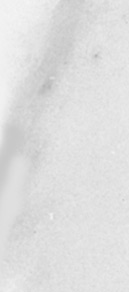

Prentice Hall and Sun Microsystems. Personal use only; do not redistribute.
26
Chapter 2 First Servlets
2.3 A Servlet That Generates HTML
Most servlets generate HTML, not plain text as in the previous example. To
build HTML, you need two additional steps:
1. Tell the browser that you're sending back HTML, and
2. Modify the
println
statements to build a legal Web page.
You accomplish the first step by setting the HTTP
Content Type
response header. In general, headers are set by the
setHeader
method of
HttpServletResponse
, but setting the content type is such a common task
that there is also a special
setContentType
method just for this purpose.
The way to designate HTML is with a type of
text/html
, so the code would
look like this:
response.setContentType("text/html");
Although HTML is the most common type of document servlets create, it is
not unusual to create other document types. For example, Section 7.5 (Using
Servlets to Generate GIF Images) shows how servlets can build and return cus
tom images, specifying a content type of
image/gif
. As a second example,
Section 11.2 (The contentType Attribute) shows how to generate and return
Excel spreadsheets, using a content type of
application/vnd.ms excel
.
Don't be concerned if you are not yet familiar with HTTP response head
ers; they are discussed in detail in Chapter 7. Note that you need to set
response headers before actually returning any of the content via the
Print
Writer
. That's because an HTTP response consists of the status line, one or
more headers, a blank line, and the actual document, in that order. The head
ers can appear in any order, and servlets buffer the headers and send them all
at once, so it is legal to set the status code (part of the first line returned) even
after setting headers. But servlets do not necessarily buffer the document
itself, since users might want to see partial results for long pages. In version
2.1 of the servlet specification, the
PrintWriter
output is not buffered at all,
so the first time you use the
PrintWriter
, it is too late to go back and set
headers. In version 2.2, servlet engines are permitted to partially buffer the
output, but the size of the buffer is left unspecified. You can use the
get
BufferSize
method of
HttpServletResponse
to determine the size, or use
setBufferSize
to specify it. In version 2.2 with buffering enabled, you can
set headers until the buffer fills up and is actually sent to the client. If you
aren't sure if the buffer has been sent, you can use the
isCommitted
method
to check.
Second edition of this book: www.coreservlets.com; Sequel: www.moreservlets.com.
Servlet and JSP training courses by book's author: courses.coreservlets.com.
footer
Our partners:
PHP: Hypertext Preprocessor Best Web Hosting
Java Web Hosting
Jsp Web Hosting
Cheapest Web Hosting
Visionwebhosting.net Business web hosting division of Web
Design Plus. All rights reserved


